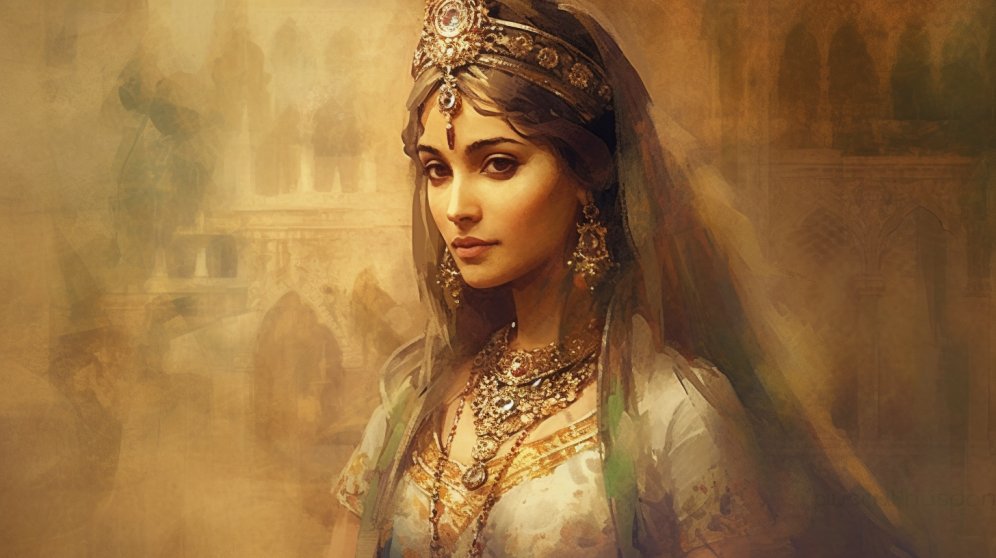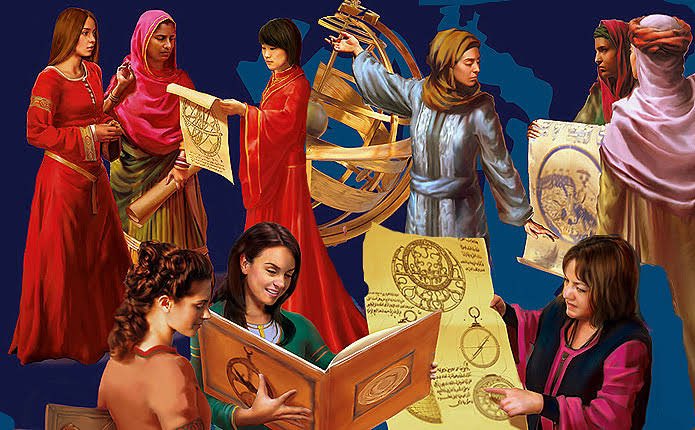1/ Nusaybah bint Ka'ab (625 CE) - An early convert to Islam, Nusaybah participated in multiple battles, defending and protecting Prophet Muhammad. Her dedication and bravery earned her a revered place in Islamic history. 

2/ Khawlah Bint al-Kindiyyah (7th century CE) - A warrior and leader, Khawlah and her female captains led an Arab army against a Greek invasion. Their inspiring leadership and courage turned the tide of battle. 

3/ Abbasid Princess Zubaidah fought against the inequalities and corruption that plagued society, advocating for social justice and the welfare of the people. Known for her philanthropy, she built several waterworks, hospitals and the like. 

4/ Princess Kalinyamat of Demak, known as the "Queen of Jepara," was a formidable figure in Java's history. She fought relentlessly to form a military strategy against Dutch and Portuguese colonial forces, defending the independence of Demak Sultanate. 

5/ Terken Khatun of the Khwarezmian Empire was crucial in defending the empire against Mongol invasions in the 13th century. She supported both military strategies and diplomatic efforts to safeguard the Sultanate. She was captured when the Mongols ransacked the Khwarzem Shah's. 

6/ Queen Safiatuddin Tajul Alam of Aceh blazed a trail as a courageous leader. She fought against Portuguese invaders, who aimed to subjugate Aceh and control its lucrative trade routes. She is remembered for her resistance, leadership, and protecting Aceh's Islamic heritage. 

7/ Queen Goharshad of the Timurid Empire was a queen consort known for her patronage of art, architecture, and education. She built one the first Bimaristan (hospital) in the region of Khorasan, besides building an exquisite library, as well as several mosques and shrines. 

8/ Queen Raziya from "Khandan-e-Ghulaman" (The Slave Dynasty) made history as the first and the only woman to rule in Delhi during the 13th century. Her reign was marked by a commitment to religious tolerance, administrative reforms, and the promotion of cultural patronage. 

9/ Gewher Nasibe Sultan of the Sultanate of Rum is celebrated for her contributions to the arts and sciences during the 13th century. 

10/ Queen Amina of Zazzau, a legendary warrior queen of the 16th century, left an indelible mark on the Hausa kingdom of Zazzau, present-day Nigeria. Known for her military prowess and leadership, she expanded her territory and fortified its defences. 

11/ Queen Asma bint Shihab of Yemen, left a remarkable legacy as a ruler in the 12th century, despite being overshadowed by her husband's reign, she demonstrated political astuteness and maintained a strong influence over governance. 

12/ Sultana Shajar al-Durr of Egypt, The Sultana of Pearls, established an empire, repelled the Crusaders and adopted culturally-syncretized architecture: indigenous Bahri Mamluk and Islamic. The Queen who was murdered deserves a thread of her own to tell her story. 

14/ Queen Fatima al-Fihri of Morocco established the University of al-Qarawiyyin, in the 9th century, which remains an enduring symbol of scholarship, as well as intellectual and cultural heritage.




15/ Zainab Tari Soomro, a historical figure and a folk heroine from Sindh, gained recognition as the only Queen to be the Sovereign monarch of Sindh. She reigned for a decade, and legend has it that no foreign military invaded Sindh during her reign. 

16/ Sultana Khadija of Maldives reigned during the 16th century and is notable for its focus on administration, strengthening the nation's trade and diplomacy. 

17/ Queen Mahpeyker Kösem Sultan of the Ottoman Empire was a formidable political figure. She is known for her political acumen and the substantial influence she wielded behind the scenes, from social justice to military reforms.




Read our thread on Muslim women in the world of scholarship here!
https://twitter.com/folkloristan/status/1670082141114314752?s=20
• • •
Missing some Tweet in this thread? You can try to
force a refresh

 Read on Twitter
Read on Twitter


























